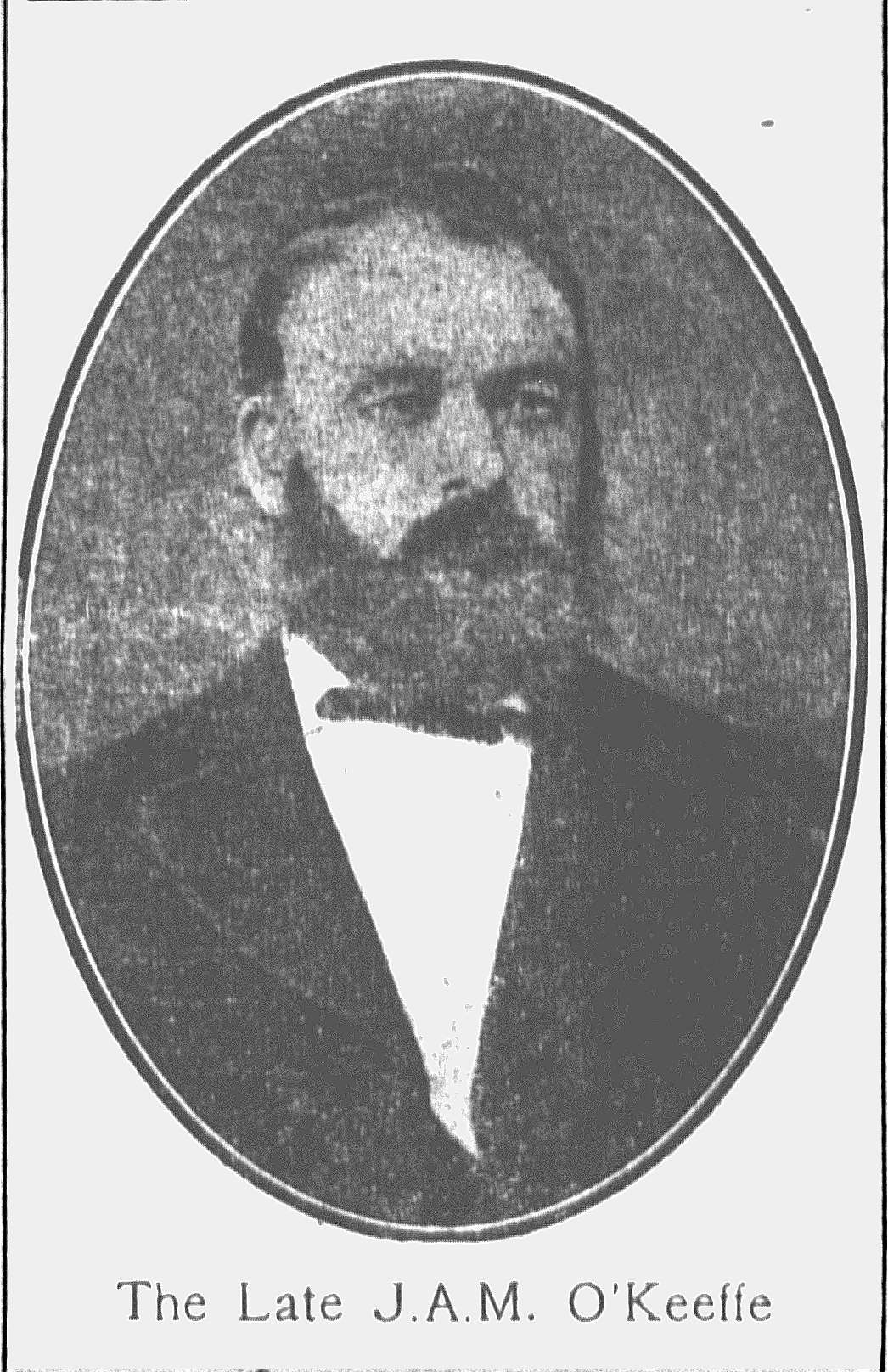John O’Keeffe: Irish builder and pioneer
By Stephanie Ryan, Research Librarian, Library and Client Services | 16 August 2023
John Arthur Manus O’Keeffe, as he came to be known, left Cork, aged 28, on the tragically named and ill-fated Fiery Star. He said he was "a passenger on this vessel, which sailed from Queenstown, Ireland, and landed at Rockhampton on November 18, 1864, after a voyage of 92 days. It was on her return that the vessel was burnt. This vessel was paid the greatest honour ever paid to an emigrant vessel leaving for Australia. At Queenstown [now Cobh] the ‘home’ fleet was there, the crew manned the yards, and cheered three times three, while the band played popular airs." Brisbane Courier 10 June 1913 p6
Within five weeks of sending this letter to the paper he was dead. What was his legacy?
A man of many roles
John O’Keeffe first went to Toowoomba where the development of the railways opened up opportunities but by 1867 the Gympie gold discoveries offered greater ones. In 1866 bank failure and government debt led to a Queensland financial crisis and the desirability of diverse, secure sources of income. As an unassisted passenger, John O’Keeffe could claim a land order, which was an entitlement to crown land. If he stayed in Queensland for two years, he could claim the same amount of land again. Queensland State Archives index, Redeemed land orders 1860-1907, indicates John O’Keeffe took advantage of this offer. He eventually consolidated 3000 acres of property near prime timber suitable for building at Gympie. He often used the first name Arthur, even on the birth records of two his children, which can obstruct easy identification of records. He appears with different occupations in various sources. Whether this was an accurate reflection of what he was doing or a convenient way to protect his assets and income is not immediately obvious. Rod Fisher, in ‘Brisbane: mining, building, Story Bridge, the windmill’ p117, points out his multiple claims. In 1877, in a Brisbane land purchase, John O’Keeffe said he was a Gympie miner. He also claimed to be a ‘bona fide settler’ at Gympie that same year. He also appeared in directories from 1876-1889 at John Street, Spring Hill. Sale of Gympie land boosted his readiness to work as a building contractor in Brisbane. His business card came to state he was “prepared to Erect all Classes of Buildings, Tombs, Monuments, Headstones, and to supervise erection of same.” By 1880 he had started a pottery business at Ipswich Road, South Brisbane. See below.
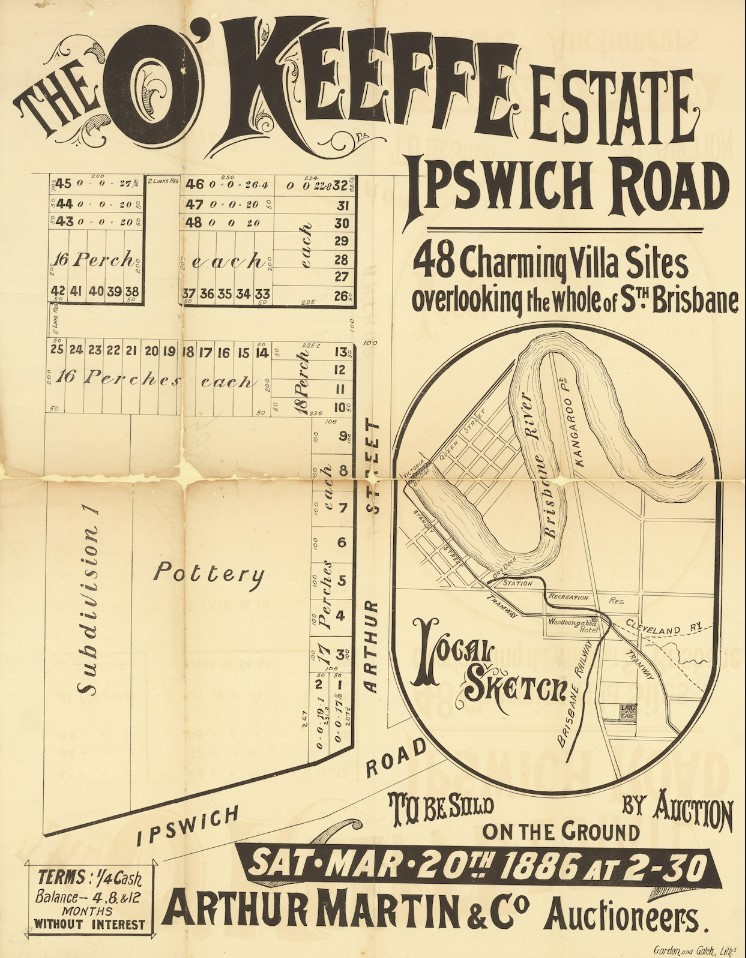
The O’Keeffe Estate 1886, part of considerable landholdings. J.A.M. O’Keeffe had been selling it in sections from 1883
Architect Andrea Stombuco and builder John O’Keeffe: public buildings
John O’Keeffe was a private contractor working extensively with the architect Andrea Stombuco, and as such was responsible for a number of significant public and residential buildings, often in stone, starting from the late 1870s when the economy was recovering.
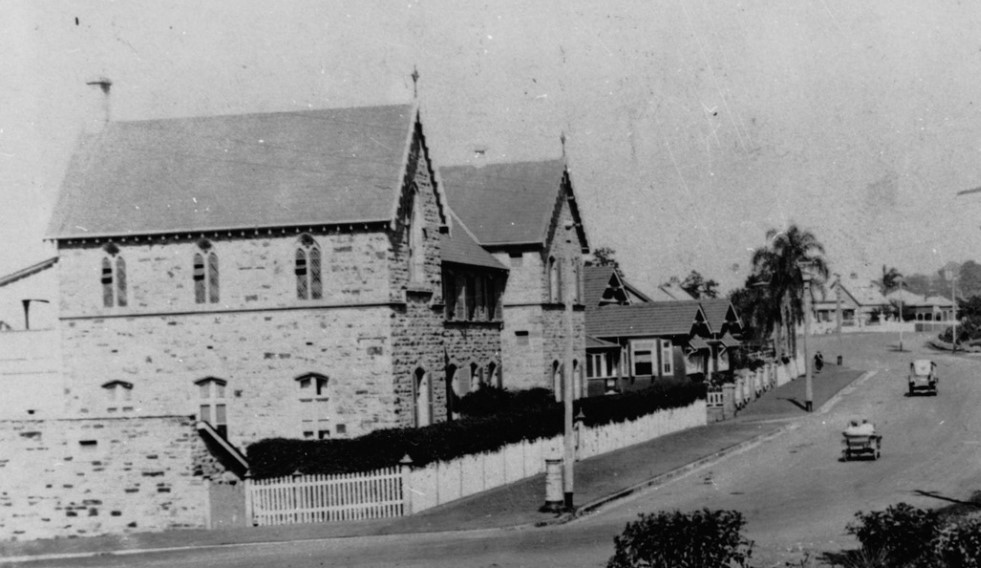
St Joseph’s College Gregory Terrace, built 1876
St Joseph’s College Gregory Terrace, built of stone, now heritage-listed, attracted a detailed description of the dimensions, layout and style in the Brisbane Courier 4 September 1876 p3.
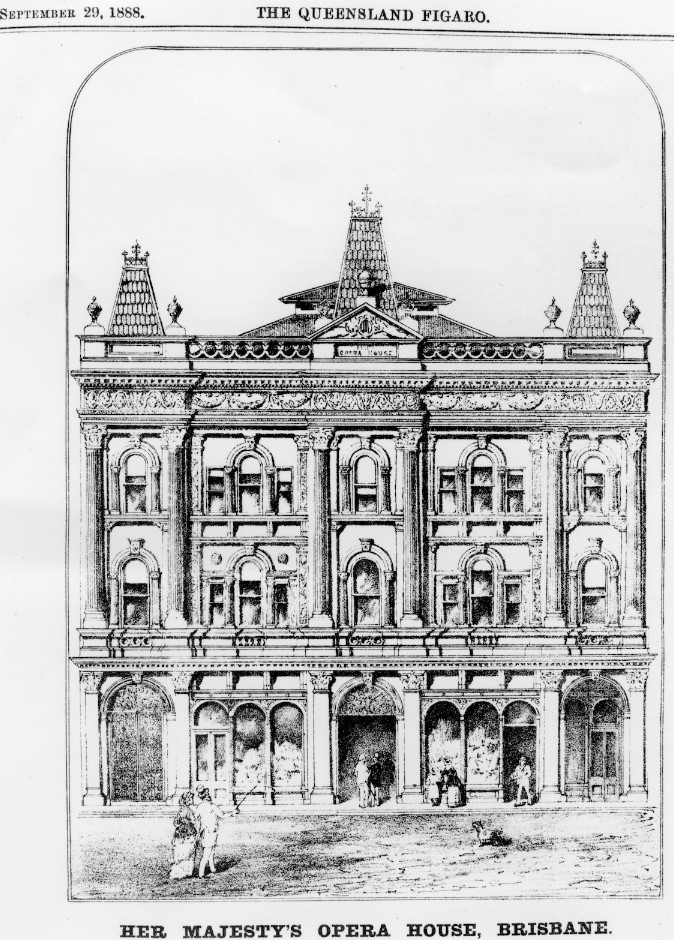
Opened in April 1888, it came to be known as Her Majesty’s Theatre
The Brisbane Courier 2 April 1888 p6 conveyed the excitement of the new opera house and its hotel in Queen Street, with beautiful up-to-the minute features, desperate efforts to have it finished in time and popular opening production ‘Held by the enemy’. Lit by electricity, it was the major venue for a variety of stage productions. It was demolished in 1984.
Other public buildings which attracted significant comment were churches, including Sacred Heart Catholic Church Sandgate (1881), St Andrew’s Anglican Church South Brisbane (1883) and Holy Cross Wooloowin (1886), all impressive structures, heritage-listed and still in existence today.
Private Residences
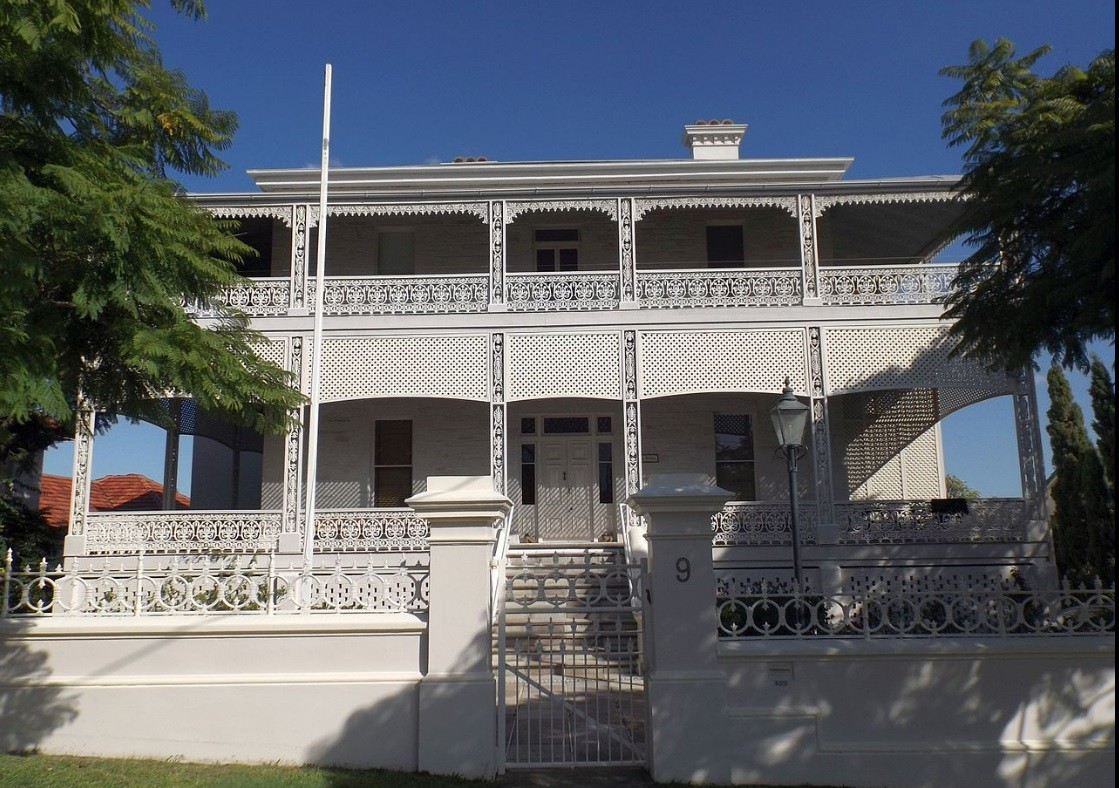
Palma Rosa, Hamilton via Wikimedia Commons
Sans Souci, later Palmarosa, then Palma Rosa, was completed in 1887 for Andrea Stombuco. It is a heritage-listed, three-storied sandstone building with extravagant, filigree features, Minton tiles and marble. John O’Keeffe was the contractor with builders, Bell and McLaughlan. The Brisbane Courier 16 December 1887 p3 described in elaborate detail the home’s extraordinary features and the event which celebrated its completion.
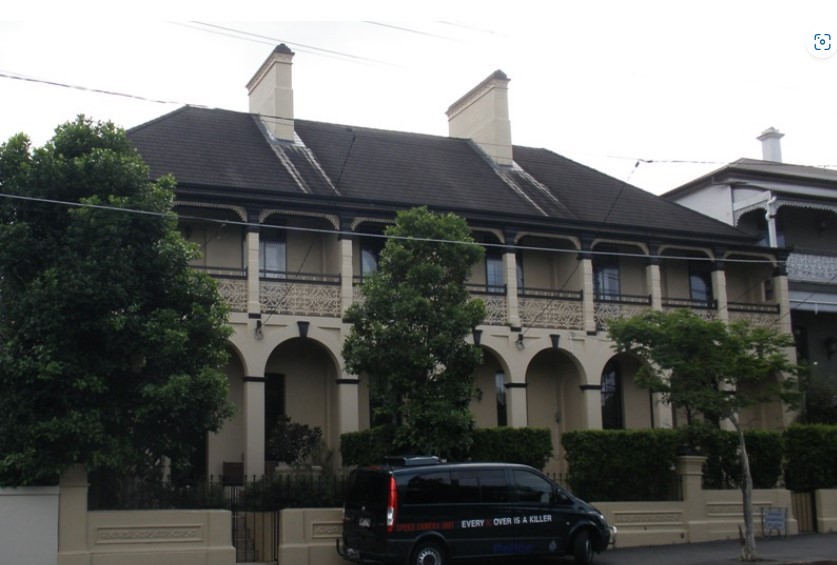
O’Keeffe’s buildings (1881) with the corner of the Illawarra buildings (b 1886-1888) to the right, Brisbane City Council
His large, stone terrace homes with decorative features along Petrie Terrace also stand out. They were known for many years as O’Keeffe’s buildings after the builder. He also built the Illawarra terrace buildings adjoining them. They were unusual at a time when most homes were wooden, freestanding and simpler. Their distinctive, beautiful style has meant they have been heritage-listed.
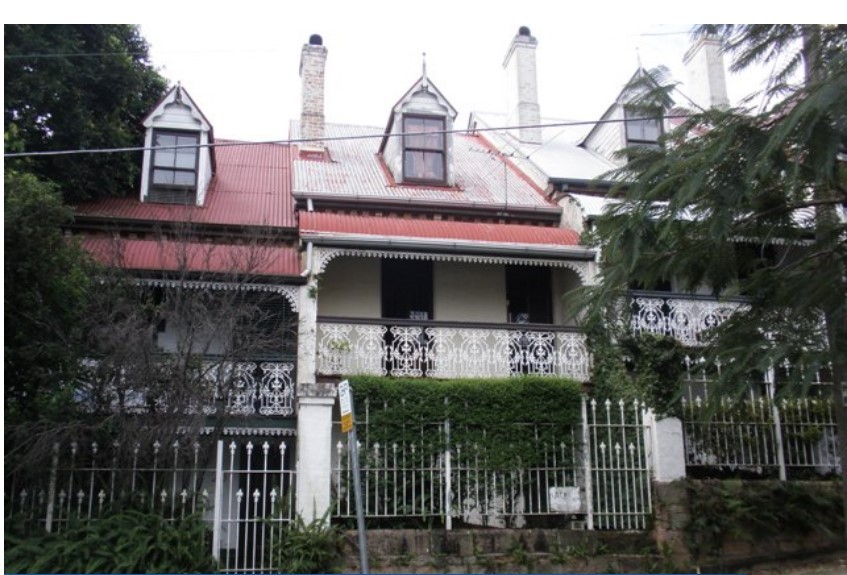
Wellington Street Petrie Terrace: 4 stone terrace homes Brisbane City Council
He also squeezed 4 stone terrace homes on 20 perches (5 perches each) around the corner in Wellington Street - small, lovely, unique and heritage-listed.
O'Keeffe family
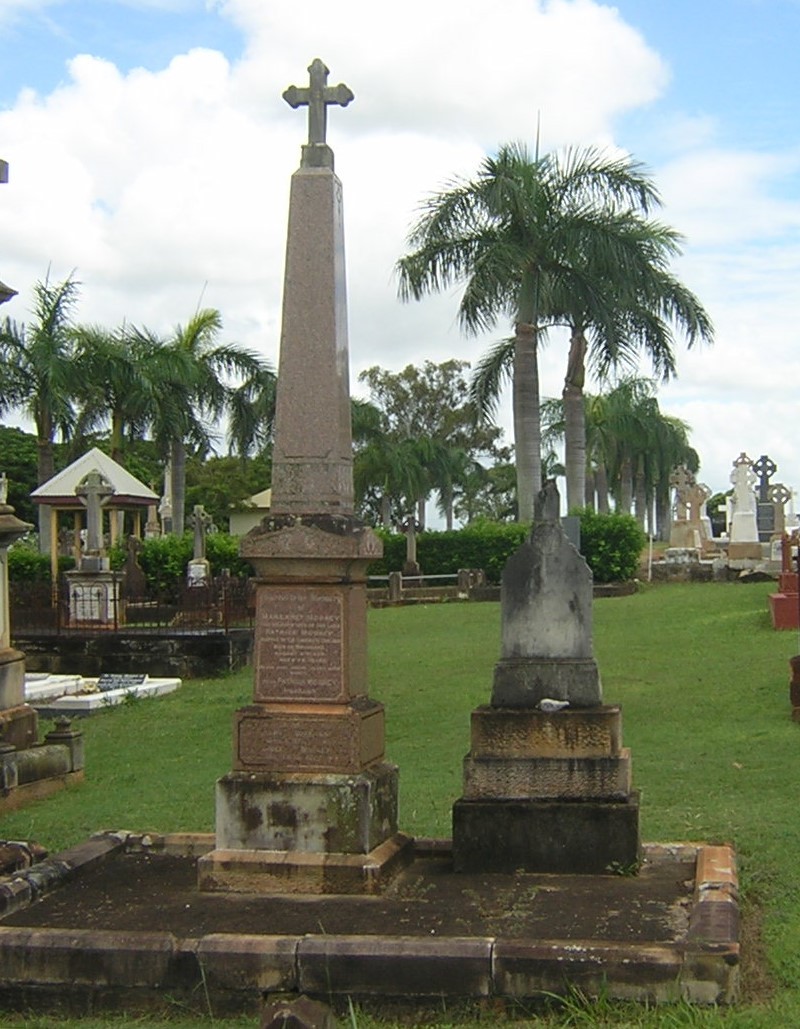
Mooney and O’Keeffe headstones, Nudgee Cemetery
Despite enormous success in his building and financial activities there were disappointments and sad ironies surrounding John O’Keeffe. He had married Ellen Mooney in 1866 and together they had eight children, four of whom died as children. None of the remaining four married or had children. The last daughter, Ellen, died in 1959. He was exceptionally proud of his lineage and kept four large sheets detailing his ancestry back to the Kings of Munster, registered at the College of Arms, London and mentioned in his obituary, Catholic Advocate 26 July 1913 p20. His genealogical charts, long forgotten and badly eaten, were found by tenants under a house in the 1980s. His own baptismal registration is a simple one in the parish of Kanturk, Diocese of Cloyne, County Cork: baptismal date - 12 April 1836 - Arthur Manus; father John Keeffe; mother Julia Giron. Although noted for his homes, buildings and monuments, his own headstone is a simple one barely legible within the plot of his Mooney in-laws and their more impressive structure.
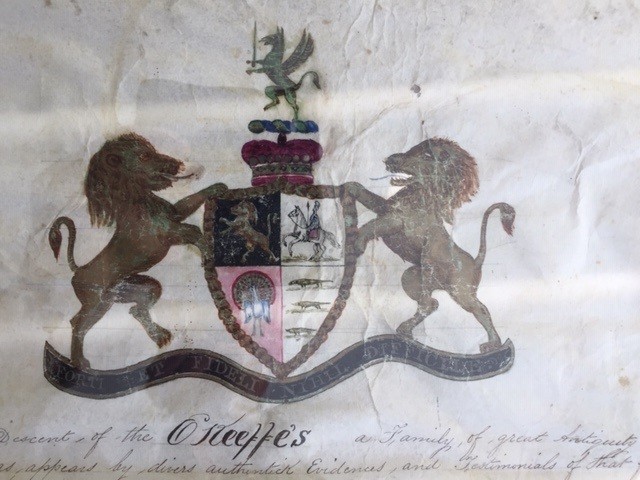
O'Keeffe family coat-of-arms, private collection
He was an ardent Irish nationalist and ally of Dr Kevin Izod O’Doherty, a fellow Corkman, and hero of the Young Irish Movement sent to Australian for his political actions. In an item initially published in the Brisbane paper, The Age and republished in W.A Record Perth 5 November 1904 p12, John O’Keeffe wrote of his frequent contact with and support for Dr O’Doherty when he was canvassing the idea of raising a testimonial in Dr O’Doherty’s honour. It was their fervent wish to see Ireland gain Home Rule which it did in 1922, but Dr O’Doherty died in 1905 and John O’Keeffe died in 1913.
Find out more
Book to attend a free webinar on Zoom, Find your Irish Family History with speakers from National Archives of Australia, Queensland State Archives and State Library of Queensland 10-noon, Monday 28 August
Read ‘John Arthur Manus O’Keeffe, Irishman: Stombuco’s building associate in boomtime Brisbane’ by Rod Fisher in Brisbane : Mining, Building Story Bridge, the Windmill
Search images of buildings by John O’Keeffe and Andrea Stombuco on One Search
More information
Family history month https://www.slq.qld.gov.au/familyhistorymonth
One Search catalogue – https://onesearch.slq.qld.gov.auopen_in_new
Library membership – https://www.slq.qld.gov.au/services/membership
Plan your visit – https://www.slq.qld.gov.au/visit
Ask a librarian - https://www.slq.qld.gov.au/services/ask-librarian
Comments
Your email address will not be published.
We welcome relevant, respectful comments.
